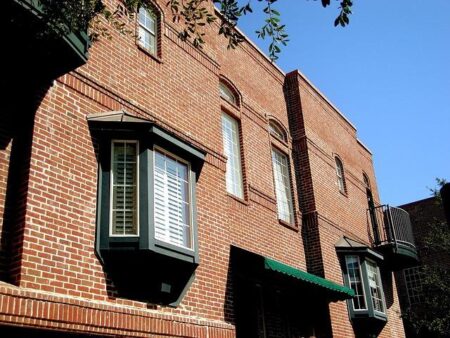Dallas-Fort Worth’s Remarkable Success in Reducing Unsolved Murders Amid National Challenges
National Surge in Unresolved Homicides Presents Growing Obstacles for Law Enforcement
Across the United States, law enforcement agencies are grappling with an alarming rise in the number of unsolved murder cases. This upward trajectory is fueled by a combination of factors including dwindling personnel, technological limitations in forensic science, and strained relationships between police and communities. Experts identify several primary contributors to this growing backlog:
- Personnel shortages: Fewer investigators available to promptly follow up on leads.
- Increasing case complexity: The involvement of organized crime networks and sophisticated weaponry complicates investigations.
- Community mistrust: Reduced cooperation from witnesses and residents hampers information gathering.
- Budget constraints: Insufficient funding restricts cold case reviews and the adoption of cutting-edge forensic tools.
Despite these nationwide hurdles, the Dallas-Fort Worth (DFW) metropolitan area stands out as a beacon of progress, demonstrating a notably higher rate of homicide case resolutions. This success is largely attributed to innovative investigative approaches and strengthened community partnerships, offering a potential blueprint for other cities facing similar challenges.
How Dallas-Fort Worth Is Outperforming National Averages in Homicide Case Closures
While many metropolitan areas report stagnant or declining clearance rates, DFW has quietly improved its homicide resolution statistics over recent years. Local law enforcement agencies have embraced a multifaceted strategy that combines technological innovation with enhanced community engagement, resulting in a consistent upward trend in solved cases. Unfortunately, this positive development often receives limited media attention, overshadowed by broader national concerns.
Key drivers behind DFW’s success include:
- State-of-the-art forensic labs: Upgraded equipment accelerates evidence analysis and suspect identification.
- Joint task forces: Collaborative teams spanning multiple jurisdictions facilitate resource sharing and expertise pooling.
- Community trust-building initiatives: Programs designed to foster open communication encourage witnesses to come forward.
| Year | DFW Clearance Rate | National Clearance Rate |
|---|---|---|
| 2019 | 62% | 57% |
| 2020 | 65% | 54% |
| 2021 | 67% | 52% |
| 2022 | 69% | 50% |
| 2023 | 71% | 48% |
Key Elements Driving Dallas-Fort Worth’s Enhanced Homicide Clearance Rates
The upward trend in DFW‚Äôs homicide case resolutions can be traced to several strategic improvements that contrast sharply with national patterns. Foremost among these is the increased cooperation between law enforcement agencies, which has streamlined information sharing and expedited investigations. Additionally, significant investments in forensic science‚ÄĒsuch as next-generation DNA sequencing and comprehensive ballistic databases‚ÄĒhave sharpened suspect identification processes.
Community involvement has also played a crucial role. Initiatives like neighborhood liaison programs and confidential tip lines have cultivated a climate of trust, encouraging residents to assist investigations without fear of retaliation.
Other influential factors include:
- Dedicated homicide task forces with specialized training
- Ongoing professional development focused on evidence handling and interrogation techniques
- Utilization of predictive analytics to detect crime trends and prioritize leads
| Factor | Effect on Investigations |
|---|---|
| Inter-agency collaboration | Accelerated case resolution times |
| Advanced forensic technology | Improved accuracy in identifying perpetrators |
| Community engagement | Greater witness participation and information flow |
Strategies to Improve Homicide Investigations Nationwide
To counteract the rising tide of unsolved murders, law enforcement agencies across the country should consider adopting a comprehensive approach similar to that of Dallas-Fort Worth. Prioritizing the integration of cutting-edge forensic technologies‚ÄĒsuch as AI-powered data analysis, enhanced DNA testing, and geographic profiling‚ÄĒcan uncover critical evidence that might otherwise remain hidden.
Equally important is fostering robust interdepartmental collaboration, especially in metropolitan areas where crimes often span multiple jurisdictions. Establishing regional task forces and streamlined communication channels can significantly improve investigative efficiency.
Investing in community relations is vital as well. Outreach programs that build trust and provide victim support encourage witnesses to share information, which is often pivotal in solving cases. Continuous training for officers on cultural sensitivity and advanced investigative methods ensures that law enforcement personnel are well-prepared to handle the complexities of modern homicide investigations.
- Technological advancements: Implement AI-driven crime pattern recognition tools.
- Collaborative frameworks: Develop multi-agency task forces and intelligence-sharing platforms.
- Community partnerships: Expand victim assistance and neighborhood engagement initiatives.
- Specialized training: Certify homicide investigators in the latest forensic and interrogation techniques.
Conclusion: Recognizing and Replicating Dallas-Fort Worth’s Success
As unresolved homicide rates continue to rise nationally, the Dallas-Fort Worth area offers a compelling example of how targeted strategies can reverse this trend. While many regions face stagnant or declining clearance rates, DFW’s achievements highlight the importance of innovation, collaboration, and community trust in effective law enforcement. Acknowledging these successes is essential for shaping informed policies and fostering community resilience. Moving forward, a balanced, data-driven approach will be critical to ensuring that progress is recognized and that struggling jurisdictions receive the support necessary to enhance justice outcomes.







